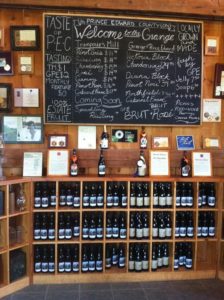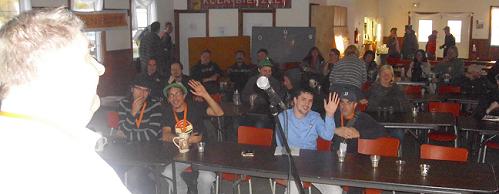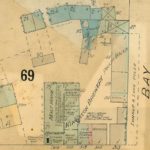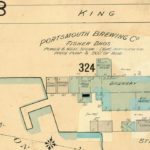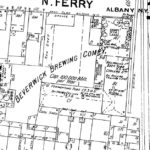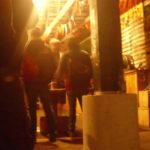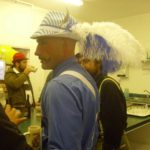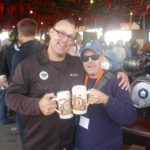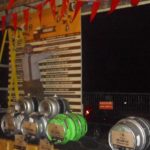It was with relief and pleasure that I was able to share emails with Jason Fisher of Indie Alehouse in Toronto today after our strong disagreement over the weekend. Others have suggested that, on one hand, I was well out of line and, conversely, entirely in the right but it still was not a good thing for me to do… calling him a jerk. So, I am sorry. I told him so in an email last night and slipped a note in the comments this morning. An apology is a good short cut to getting to where you want to be – especially if you have never met someone you owe an apology.
That being said, and as I told Jason, I am not sure that resolves our disagreement even if it civilizes it. See, there was enough brain imploding stuff in the message for me that I not only disagree with where he was going but was also left wondering if someone gave out a vital message about my blog and blogging in general that I missed. It comes from these lines of Jason’s:
I’m not sure why bloggers at the same time feel like journalists but also refuse to do any basic fact checking or follow up. Did you contact anyone to clarify anything before writing? It appears you didn’t even fully read the article… .. Keep the standards high and please feel free to reach out with questions to the subjects you write about. You would be surprised how much help you will get if you are open about your intentions and honest in your writings. Thoughtful criticism is amazing, but get’s muted when others just spew hate or nonsense.
You will note the potential to read this statement to suggest that I am like a journalist – not to mention a spewer of hate or nonsense. I am not a journalist. True, I like to write about good beer and journalism and enjoy my many conversations that follow posts about that such as this recent one. But asking questions about journalism as applied to good beer doesn’t make me a journalist. I have written and sold articles but, frankly, being shocked at the pittance the path offered by way of reward have since declined further offers. You poor bastards, I think whenever I read an article.
In my 2008 review of Michael Jackson’s last edition of Great Beers Of Belgium, I got as close to where I think I have ever got to expressing how many different sorts of writing can be applied to good beer. And of those sorts of writing I’ve decided that what I do is write personal essays about my relationship with beer presented to the public through this medium. The post I wrote that triggered Jason’s strong response was no different. And I even considered it supportive. Still do. Not boot-licky but certainly supportive. I was in particular interested in the complex environment of microbes sitting on a grape monoculture and discussed that quite briefly in a very brief post. I did also reiterate that I hoped the resulting beer from the wild yeast project was not sold for twenty bucks a glass and continue to have that strong hope even if it was a source of unhappiness. What was most missed, however, in that welling up of emotion were three statements that I also continue to keep close to my heart. The project in question is a great idea, I hope the beer will be yummy and also, just to drive home the point, I hope it is tasty, too. Hardly, Mr. Hate-y McHate-ster.
So? Why is this continuing post of confession of iniquities worthy or at least driving into another paragraph? Because some anonymous wit tweeted “Wow… talk about get off my lawn syndrome” which is odd because this is, in fact, my lawn. I write my own stuff here, don’t expect anyone takes much from it, like having interesting conversations but do pretty much what I want. See, this is also my lawn. I explore suburban food gardening out there. Here I explore ideas about beer in here. I don’t write with ambition. I don’t write for readers. I don’t certainly write articles. And I really don’t care much for anyone’s opinion as I don’t owe strangers, even you reading this now, anything through my writing any more than I owe the neighbours lettuce because it falls within their view. Don’t confuse me for a booster. Or a ready or implicit PR source for your interests of business. Or someone needy for a relationship with a brewer. Or a ready object for your judgement. Or someone with an agenda that needs to be parsed from tone when the express words don’t suit yours. Or even part of your scene or community or industry. I am just a guy writing. Because I like writing. Like I like green beans and raspberry plants.
Where does that leave us? Stan put it well when he set the rule that it is only beer. But another person I have never met even on -line may have put it better when he interjected in the flow that the best beer is a shared buddy beer, a great reminder of the proper point of the entire hobby – because this is all a big hobby, right. Assuming someone is needing pointed interjection is a pastime of the congenitally misguided as well as the nicest sort of folk you may encounter. Finding malice where none exists is such a waste. Don’t bother. Not on my lawn at least. So you can believe me when I repeat that I am sorry, Jason. But believe me also when I write I think the project of wild yeast inoculation is a good idea. Because I do.
 I think I only dislike one thing about the prospect of drinking this new beer. I have a strong suspicion that Jays fans made it. Have I mentioned I really dislike the Toronto Blue Jays? Years ago when I bounced in a bar in London, Ontario there was another bar down the road all done up with Detroit Tigers memorabilia except for signs that said “Jays Suck” which I loved. See, as an Expos fan since ’67 when I was a toddler with a cap and ’73 when I saw the Yanks lose at Fenway, I have had a dual allegiance. One sadly past. One present. Yet… I love baseball. The season starts this weekend. Spring, summer and fall all lay before me again filled with baseball. See, I have done this. I have hit doubles in America in recent years as a rather fat man off a better player than me. I have hand lathed bats. So, the baseball theme chosen for Toronto’s new Left Field Brewery has me.
I think I only dislike one thing about the prospect of drinking this new beer. I have a strong suspicion that Jays fans made it. Have I mentioned I really dislike the Toronto Blue Jays? Years ago when I bounced in a bar in London, Ontario there was another bar down the road all done up with Detroit Tigers memorabilia except for signs that said “Jays Suck” which I loved. See, as an Expos fan since ’67 when I was a toddler with a cap and ’73 when I saw the Yanks lose at Fenway, I have had a dual allegiance. One sadly past. One present. Yet… I love baseball. The season starts this weekend. Spring, summer and fall all lay before me again filled with baseball. See, I have done this. I have hit doubles in America in recent years as a rather fat man off a better player than me. I have hand lathed bats. So, the baseball theme chosen for Toronto’s new Left Field Brewery has me.

